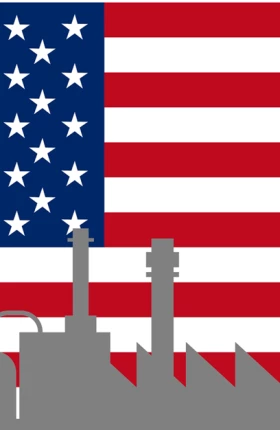Export manufacturing has recently become the unsung hero of the U.S. economy. Despite all the public focus on the U.S. trade deficit, little attention has been paid to the fact that the country’s exports have been growing more than seven times faster than GDP since 2005. As a share of the U.S. economy, in fact, exports are at their highest point in 50 years.
But this is likely to be just the beginning. We project that the U.S., as a result of its increasing competitiveness in manufacturing, will capture $70 billion to $115 billion in annual exports from other nations by the end of the decade. About two-thirds of these export gains could come from production shifts to the U.S. from leading European nations and Japan. By 2020, higher U.S. exports, combined with production work that will likely be “reshored” from China, could create 2.5 million to 5 million American factory and service jobs associated with increased manufacturing.
Our perspective is based on shifts in cost structures that increasingly favor U.S. manufacturing. In the
Our analysis suggests that the U.S. is steadily becoming one of the lowest-cost countries for manufacturing in the developed world. We estimate that by 2015, average manufacturing costs in the five major advanced export economies that we studied—Germany, Japan, France, Italy, and the U.K.—will be 8 to 18 percent higher than in the U.S. Among the biggest drivers of this advantage will be the costs of labor (adjusted for productivity), natural gas, and electricity. As a result, we estimate that the U.S. could capture up to 5 percent of total exports from these developed countries by the end of the decade. The shift will be supported by a significant U.S. advantage in shipping costs in important trade routes compared with other major manufacturing economies.
These shifting cost dynamics are likely to have a significant impact on world trade. China and the major developed economies account for around 75 percent of global exports. And the U.S. export surge will be felt across a wide range of U.S. industries.
The most profound impact will likely be on industrial groups that account for the bulk of global trade, such as transportation equipment, chemicals, machinery, and computer and electronic products. Production gains will come in several forms. In some cases, companies will increasingly use the U.S. as a low-cost export base for the rest of the world. In other cases, U.S. production will displace imports as both U.S. and foreign companies relocate the manufacturing of goods sold in the U.S. that otherwise would have been made offshore.
The full impact of the shifting cost advantage will take several years to be felt in terms of new production capacity. And the magnitude of the job gains will depend heavily on the degree to which the U.S. can continue to enhance its global competitiveness. One of the biggest challenges facing U.S. manufacturers is the supply of skilled labor. As we explained in a
Companies should, of course, continue to maintain diversified manufacturing operations around the world. But at the same time, they must be aware that the structural changes in production cost structures represent a potential paradigm shift for global manufacturing that warrants immediate attention.




